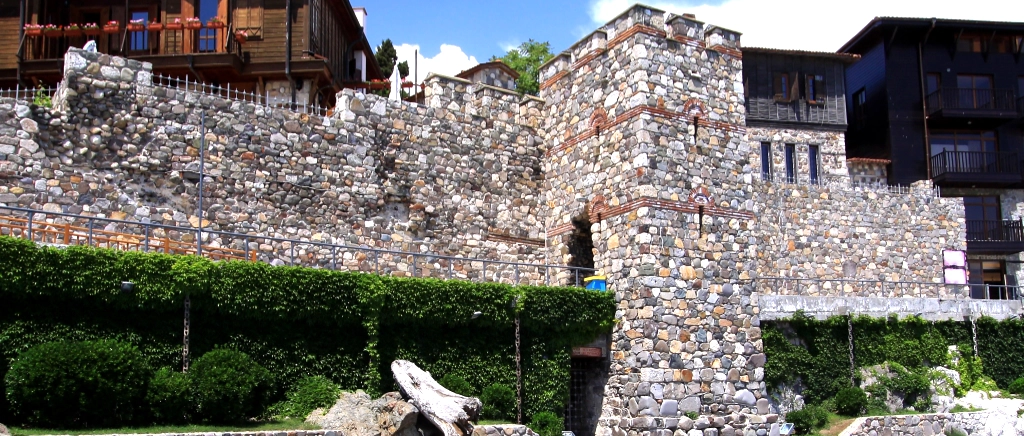
Southern Fortress Wall
The Museum Complex “Southern Fortress Wall and Tower” is located in the southeastern area of the Skamniy Peninsula, a main part of the Architectural-Historical Reserve “Ancient Sozopol.” The creation of the museum was prompted by interesting archaeological discoveries during the demolition of an old house. Excavations revealed well-preserved sections of the southern fortress wall, a rectangular watchtower, a granary along with 12 large grain pits, and other smaller findings, as well as an ancient well dating back to the 4th-3rd century BCE.
The well-known fortress wall that we see today was built and repeatedly reconstructed during the period from the 4th to the 14th century, and it remained functional until the middle of the 17th century. The construction of the wall consists of a double-sided masonry made of rubble stone bonded with horosan. In some places, leveling brick belts called “opus mixtum” were used. The height of the fortress wall varied between 8 and 11 meters, depending on the terrain, and its width was approximately 1.70 meters. Drainage openings were present at a distance of 5-10 meters from the base of the wall.
The watchtower, exhibited in the museum, has a height of 14 meters, following the requirement that towers should be built at least 2 meters higher than the fortress wall. It is rectangular in shape, with solid masonry. It had battlements at the top for defense and a wooden superstructure serving as a roof.
The granary dates back to the 5th-6th century when the city of Sozopol had the largest grain export port on the Black Sea. It has dimensions of 22 meters in length and 14 meters in width. Based on this information, the granary is identified as the largest building discovered during archaeological excavations conducted in the territory of Sozopol. The acoustic qualities, the specific characteristics of the wall, and the hydrophobic coating of the building are impressive. The wall is 140 cm thick. The hydrophobic nature of the coating played a role in preserving the grain intact, despite its proximity to the sea. It is interesting to note that in ancient times, there were barracks above the granary where the guards protecting the fortress towers along the Southern Fortress Wall resided.
The ancient well is a unique immovable cultural treasure. The well was built in the 4th-3rd century BCE and is part of a cult complex called “Nymphaeum,” created in honor of the “Three Nymphs.” It is constructed with stone blocks – sandstone quadrants tightly fitted together without mortar. Mortarless construction is characteristic of the building practices of the ancient Greeks. Interestingly, during archaeological excavations, sweet water was once again noticed shimmering at the bottom of the well!
The museum showcases original parts of the ancient water supply system of Apollonia Pontica. According to archaeologists, the water pipeline dates back to the 5th century BCE, giving us an insight into the remarkable level of development of ancient civilizations in these lands. Around the area, you can spot amphorae, pitchers, and ceramic fragments discovered during excavations. The building of the museum complex is easily accessible for people with disabilities, heading east from the Sea Garden along “Yuzhna Panoramicna Aleya” street, located just above the level of the Black Sea.


